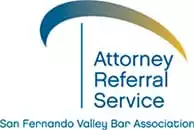The Process of Claiming Financial Insolvency
What does it mean to claim financial insolvency? To better understand the process, learn the details here.
Read further on now.
Introduction
Sometimes people – and companies – go through trying times. Over the last couple of years due to the global pandemic, financial situations have changed drastically for many. And many have been left unable to pay their bills.
Insolvency happens when financial obligations cannot be met when they need to be. Thanks to an insolvency exclusion with the IRS, there are some advantages for those who qualify. Here’s what you need to know.
What is Insolvency?
The word insolvent means to be unable to pay debts that are owed. It signals that one’s financial affairs are in a state of distress. So, in other words, when total liabilities exceed total assets, one may be referred to as insolvent. For businesses, a company may be insolvent if there are not enough assets to cover the sum of debts – or simply if it is unable to pay debts as they are due.
Individuals can be insolvent, too. This happens when one is unable to take care of debts as they come due.
Insolvency can happen for many different reasons. And for many, it comes down to credit card debt – with the average American family carrying about $6,194 in credit card debt. It is roughly the same across all age groups, too.
Insolvency can happen for other reasons, too, such as:
- Change in employment or income – including job loss
- Divorce
- Increase in medical bills
- Student loan debt
- Unexpected expenses
- Poor financial management
For businesses, it can be:
- Rising costs of doing business
- Lawsuits
- Inability to adapt in the marketplace
First Things First: Making Payment Arrangements
Before moving forward with any legal insolvency proceedings, it is very common for individuals or businesses to try to make informal arrangements for payment to their creditors. Sometimes this may involve an alternative payment plan than the one currently due.
This may be all that is needed for some individuals to get back on their feet. However, for many others, it is simply not enough. When outstanding debts and financial obligations are higher than the fair market value of everything you own, you cannot pay your debts. This is a sign of insolvency.
Claiming Insolvency
When you claim insolvency, you do so with the IRS via an insolvency worksheet and claim form. The IRS will then carefully and diligently review your claims in order to make a determination about whether you are truly insolvent. They will carefully review what you have submitted – especially your calculations. From there, they will either accept your claim, deny it, or question it.
If your insolvency claim is accepted, then you don’t have to worry about paying taxes on your canceled debt up to the insolvent amount. If your claim was denied, you will have to move forward with paying your full taxes. And if they have questions, they will reach out to you for more details about what they are looking for – in addition to having you submit your completed worksheet.
Claim Insolvency – Or File Bankruptcy?
Are insolvency and bankruptcy the same thing? No, they are not. You can be insolvent this year and find yourself in a different set of circumstances next year. And you don’t have to file for bankruptcy protection. However, if you choose to file bankruptcy, you are then claiming that you are insolvent. Unlike the potential for better circumstances next year – a bankruptcy doesn’t go away right away.
It is important to note that those who are insolvent now may very well be on their way toward bankruptcy down the road, which is considered the last resort.
The Process of Claiming Financial Insolvency
Before you take the step to file for financial insolvency, it is a good idea to speak to a financial advisor and even seek the advice of counsel. There may be other steps or options available to you that can help you gain better control of your finances. Further, having this professional guidance can ensure you do everything correctly so that there are no questions – only approvals! If you have a discharged bankruptcy, your bankruptcy attorney will likely encourage you to move forward with this process.
To begin the process, you will want to fill out two IRS forms, 1099-C and 982. The former form reports the cancellation of the debt and the latter determines how much of the debt can be excluded.
Step One: Determine Insolvency. You will have to determine whether or not you are insolvent in the eyes of the IRS. Remember, if your liabilities are greater than the fair market value of your assets, you are insolvent. Your assets should include everything from clothing to real estate. And your liabilities may be credit card debt, mortgage, utility bills, and more.
Step Two: Complete the Forms. You will need to complete the two IRS forms mentioned above, forms 1099-C and 982. Both of these forms can be found on the IRS website. Follow the instructions carefully and, if you have any questions, ask for help.
Step Three: Work on Your Financial Habits. Once you complete the process and claim insolvency, work on getting rid of your debt and keeping it gone. Any financial opportunities you want in life are going to require a good credit score. But, a heavy load of debt will have a negative effect on it. Getting started with a debt counselor is always a good place to start.
Conclusion
Going through the process to claim insolvency can seem daunting and devastating. No one wants their financial woes brought to light. Yet, it is important to realize that you can bounce back from this. You are not going to be stuck dealing with this forever – as long as you make changes to your financial habits. If you filed for bankruptcy, that will eventually fall off your record. And, you can always boost your credit score by keeping a low amount of debt and always paying your bills on time.
Businesses can bounce back, too. Search for more affordable solutions – such as vendors – and make changes to the way you do business.
Not sure if bankruptcy or insolvency is right for you? Speak with an attorney.
Are you in search for a certified attorney to represent you?
Let us help you find one today!


